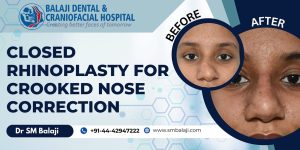Genetic transmission of disorders in human beings
Genes are a form of code used by living cells to guide developmental pathways in living organisms. The sequence of the code in the DNA is very important for the normal development of all forms of life. They are transferred from one generation to another and contain information that is vital for the normal development of the organisms.
Mutations are changes in the sequence of the code contained in genes. Mutations can either be beneficial or harmful. Evolution of living organisms through the ages has been enabled by beneficial mutations. These help species adapt to their changing environment. An example of this adaptation is the quality of air millions of years ago and the quality of the air we breathe now. Oxygen content in the air millions of years ago was much higher than what it is now. If this air was to be breathed by organisms living today, it would prove lethal to all forms of life. The gradual adaptation of life to lowered oxygen levels has been enabled by beneficial genetic mutations down the ages.
Harmful mutations can cause abnormalities in living organisms and are responsible for the various syndromes and disorders found in living organisms. They also cause the disorders to be transmitted from one generation to another. Crouzon syndrome is one such disorder that is transmitted through genes from one generation to another.
Patient born with Crouzon syndrome:
This is a 15-year-old boy from Patna in Bihar, India who was born with Crouzon syndrome. He has retrusion of his maxillary bone and facial asymmetry. One of his main complaints was a pointed nose. This had been progressively getting worse as he grew up and he had become very socially withdrawn and depressed because of this developing facial deformity. His parents had been very distressed by this and had approached a local surgeon for treatment.
Referral to our hospital for surgical management
The surgeon examined the patient and explained to the parents that the patient needed to be operated on by an oral and maxillofacial surgeon. He then referred them to our hospital as our hospital is renowned for facial reconstruction surgery in India. Our hospital is one of the few specialty centres for distraction osteogenesis surgery in India.
Initial presentation at our hospital for consultation and treatment
Dr SM Balaji, facial cosmetic surgeon, examined the patient and formulated a detailed treatment plan for the patient. This included distraction osteogenesis of his maxilla using Kawamoto distractors followed by rhinoplasty surgery at the time of removal of the distractors. He is one of the few surgeons in India who has extensive experience with distraction osteogenesis. The parents of the boy were in total agreement with the proposed treatment plan and signed the informed surgical consent.
This surgery will correct the cosmetic congenital defects arising from Crouzon syndrome. It is one of the cosmetic procedures performed on patients with this syndrome. Surgery is performed to help the patient lead a normal life. Plastic surgeons rarely perform this procedure though this can be categorized under facial plastic surgery.
Kawamoto distractors are manufactured by KLS Martin, one of the leading manufacturers of cutting edge surgical equipment in the world. Constant research is conducted to advance surgical frontiers to provide better results for patients. Advancements in the field of craniofacial surgical instrumentation is made possible by inputs from leading craniofacial surgeons from around the world like Dr SM Balaji. Our hospital is a leading hospital in India that provides such invaluable feedback to instrument manufacturers around the world.
The patient then underwent Le Fort III with distraction osteogenesis using bilateral Kawamoto distractors at our hospital. After about 10 days of consolidation for stabilization of the Kawamoto distractors, distraction of about 1 mm was performed every day bilaterally until a total distraction of 18 mm was achieved bilaterally. Following completion of the distraction, a period of three months was allowed for complete consolidation and stabilization of the distracted maxillary bone.
A brief introduction to Crouzon syndrome
This is a genetic disorder where there is premature fusion of skull bones. A mutation in chromosome 10 results in Crouzon syndrome. The first branchial arch is affected by this. This results in abnormal development of the bones of the face and the skull. Fusion of the metopic suture results in frontal bossing and trigonocephaly, fusion of the coronal suture results in brachycephaly and fusion of the sagittal suture results in dolichocephaly.
Patient presents for removal of distractor
The patient now presents three months after successful distraction osteogenesis for removal of the Kawamoto distractors. A rhinoplasty procedure will also be performed at the same time for correction of his nasal deformity. A 3D CT scan was first taken to check for new bone formation. The amount of new bone formation was found to be sufficient.
Successful removal of bilateral Kawamoto distractors and rhinoplasty
Under general anaesthesia, bilateral incisions were placed through the previous surgical scars, bicoronal flaps were raised, and the temporalis muscle was reflected. The Kawamoto distractors were exposed bilaterally and removed. Closure of the incisions was done using resorbable sutures. Once this had been achieved, the rhinoplasty was then performed.
Broad nose correction after distractor removal
Through an intranasal approach, intercartilaginous incision was placed and the nasal mucosa was dissected. The medial nasal cartilage was trimmed and medial osteotomies were performed followed by lateral osteotomies bilaterally. Closure was then done using resorbable sutures.
Patient and parents express their happiness at surgical result
The patient and his parents were very happy with the results of the surgery. His face was symmetrical now and his nose also had a normal contour now without being pointy. They said that he would now be able to lead a normal life as he was very happy with the cosmetic results of the surgery.





